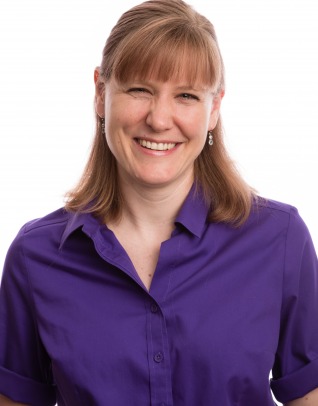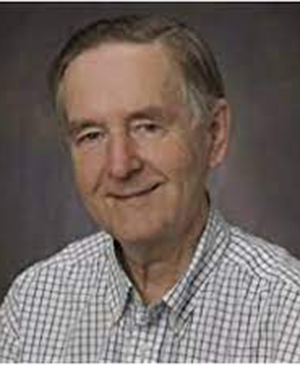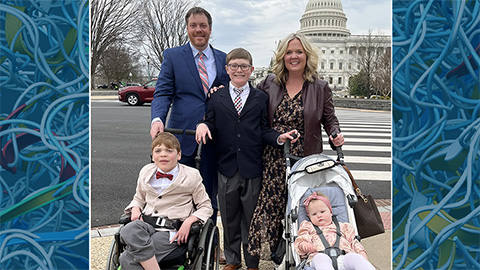Life after one year of COVID-19
The first U.S. death from COVID-19 was reported on Feb. 28, 2020. We later learned that the first death was actually weeks earlier. More than half a million deaths later, we have endured a pandemic that few of us — other than virologists — could have imagined 12 months ago.
For us fortunate survivors, for those of us who have kept our health, our jobs, our homes and (perhaps tenuously) our sanity, this has been a year of learning just how adaptable we are. And of realizing what we truly value in our lives.
What about you? How has your life changed over the last year — and what have you learned?
Back in March 2020, we asked ASBMB members to let us know how the pandemic was affecting them in the early days. Now we want to know what’s happened to you over the long haul. Have you made some long-term changes? Discovered profound truths about yourself? Mastered some useful social distancing hacks? Have you missed a celebration, or suffered a loss and had to grieve without the in-person support of friends and family?
Whatever it is, we’d like to hear from you. You don’t have to write a lot — 300 words is fine. But we love details. Give us the nitty-gritty of your life one year on. Email your submission to asbmbtoday@asbmb.org.
Have I finally flipped?
“Well, it’s not technically a flipped classroom. I’m not recording videos or anything.”

For years, I corrected colleagues who were evaluating my teaching. Students in my introductory courses came to class ready to discuss the material, answer clicker questions and argue over common misconceptions. Although I sometimes stood at the front of the room flailing at my slides, it felt less like a lecture and more like a conversation. My classroom was noisy, and one of my evaluators remarked that I get plenty of exercise peering over students’ shoulders and listening to their conversations as they worked.
A pandemic forcing me to move online finally did it. About half of the students in my courses are international, spread around the world from Ghana to Japan. Now, I sit at my dining room table, prop my laptop on a tower of textbooks, open a PowerPoint, and talk to my cat about the central dogma. I record multiple bite-sized videos and craft concept check quizzes. I manually edit audio transcripts to correct Rainbow Tides to ribonucleotides and Mr. NA to mRNA.
In class or on their own time, groups of students tackle challenging problems to apply the material, and I clear up misunderstandings from the previous assignment. I design modeling labs rolling electronic Dungeons & Dragons dice and analyzing bioinformatics data. Students rename themselves as dollar signs to encourage low-stakes participation. My classroom is quiet, with students preferring to rapidly text in the chat window rather than risk unmuting and interrupting. And though it feels weird, it seems to work.
This fall, I will have to make a decision: What do I keep? Will I present content in class, or just use the videos I’ve already spent so much time recording and editing? Will I still use clicker questions that instigate debate? Will every day be group work?
Have I truly, finally, flipped?
A sliding scale adaptation to the pandemic

I lived a lifetime hearing the details of how the smallpox pandemic wiped out all the children my great-grandparents had except for one little daughter who survived with a lifelong disability, losing sight in her right eye. That little girl survived many more life challenges and wars to grow up as a wonderful woman. She raised 12 children and many more grandchildren — I am lucky to be one of them. Perhaps the combination of being a scientist and my grandmother’s survival story ameliorated my adaptation to the first pandemic of my life.
I share with others much of the intense feelings this pandemic brought along in a year that ranged from one extreme of extra family time at home to another of complete isolation from family outside our home. There were unique experiences, nonetheless, and I want to highlight my share of them.While most school-age children adapted, somehow, to distance learning, those with special needs had a harder journey. My 14-year old nephew with autism understood that something called a pandemic had changed much of what was usual around him. He never came to terms, however, with his in-person school cancellation. Besides learning, going to school every morning was a routine he loved and thrived with. His parents over the past year noticed a clear decline in his mental health, which reflected negatively on his livelihood.
Among the lessons we have learned from the pandemic, we might have lagged in this area. Watching my nephew’s journey, I realized how far the scale of difficulty can go. I also realized how helpful it would have been if awareness had been raised earlier enough to allocate some of the COVID relief resources to provide safe spaces and maintain a form of school routine for students like my nephew.
— Mona H. Al–Mugotir, University of Nebraska Medical Center
Finding the Achilles’ heel of the coronavirus

What has struck me since my ASBMB commentary in March 2020 is how rapidly peer-reviewing constraints were abandoned. Preprint publication forums, such as arXiv, bioRxiv and medRxiv, facilitated rapid communication among frontline researchers, and fast-track peer-review procedures expedited publication in the formal literature. Many scientists with relevant expertise, including those deemed retired and away from publish-or-perish pressure, joined the fray.
In successive editions of my textbook Evolutionary Bioinformatics, I mentioned my 1995 reporting of a potential structural Achilles’ heel in the AIDS virus genome. Systematic investigations by others have since applied that term to the region identified. Could SARS-CoV-2 be similarly endowed?
The bioinformatic approach I pioneered was novel in that, for identifying local genome targets, it recognized the importance of removing the contribution of base composition (a genome-wide character) to RNA structure analyses. Base order alone provided a sensitive indicator of local sequence structural properties that cast fresh light on a variety of problems in the biomedical sciences, such as speciation and origin of introns.
When, with Chiyu Zhang of Fudan University, we applied the technology to the SARS-CoV-2 genome, not one, but several potential Achilles’ heels emerged. Happily, although an editor of the journal Science declined to review it, our discovery was promptly reported in the preprint literature, where applications of the latest gee-whiz technologies to SARS-CoV-2 genome structures are daily accumulating — a dazzling feast of colorful stem-loop collages.
However, authors of the latter often seem unaware of the underlying biology regarding global (genome-wide) rather than local selective pressures. This appears to be partly due to the general emphasis, with vaccines in mind, of detecting variant regions, rather than invariant regions. Newly emerging variants may keep us, like the Red Queen, constantly running for new vaccines but remaining in the same spot. In contrast, invariants tend to be for keeps.
Over the past year, natural selection seems to have kept invariant regions invariant. Hence, they may be critical for SARS-CoV-2 survival and are likely to remain so in the future. Thus, chemotherapies targeting invariant sites, although they will not immediately contribute to herd immunity, will ameliorate ongoing infections and decrease contagiousness.
— Donald R. Forsdyke, Queen’s University at Kingston
Volunteer efforts highlight strength of BMB education community
By this time last year, the scope of the global pandemic was becoming clear; major conferences were quickly moved online or canceled, and many colleges and universities switched to fully remote instruction.
We were in the middle of administering the American Society for Biochemistry and Molecular Biology Certification Exam for undergraduates, which is offered each spring to students completing their degrees in ASBMB-accredited programs. Even as they balanced myriad unexpected challenges, dozens of volunteers contributed their energies to ensure the success of the ASBMB’s educational efforts.
The first test of this resilience was last year’s exam. It was not feasible in March, 2020 to administer the exam at all the accredited institutions that had planned to participate; however, with the efforts of undergraduate program coordinators and ASBMB staff, more than 900 students took the exam last spring (just shy of the 2019 numbers).
Sixty-six volunteers from institutions across the U.S. teamed up to score the exams. These volunteers are primarily BMB faculty, joined by some postdoctoral scientists and senior graduate students. At least a third (including the author) have scored the exam for four or more years, and 98% of the 2019 scorers volunteered again in 2020. If a volunteer had to take a temporary step back, other scientist-educators stepped forward to share the work. Together, we were able to return 2020 exam results to students on July 1, only one day past the usual target date of June 30.
The fall 2020 accreditation cycle for undergraduate biochemistry and molecular biology programs ran smoothly. The accreditation review panels convened remotely, allowing them to extend submission deadlines for programs experiencing sustained disruptions. About a third of the applications reviewed had their deadlines extended for a month. By meeting remotely, we were able to offer such extensions and complete the review process by the end of the calendar year. Eight new programs were accredited and five were re-accredited, for a total of 101 ASBMB-accredited programs in 38 states.
In a new initiative, the certification exam is being administered remotely this spring, providing flexibility for programs and students, especially those unable to return to in-person instruction. A dozen new scoring volunteers have joined the ranks, along with several new question writers.
I am thankful for unfailingly encouraging and productive interactions with my fellow ASBMB volunteers; I am immensely impressed with the collaboration, compassion and dedication these individuals have shown in supporting their colleagues and students. This community effort continues to be a bright spot during a difficult time.
Chair of the ASBMB Accreditation and Certification Exam Subcommittee,
ASBMB Education and Professional Development Committee
Enjoy reading ASBMB Today?
Become a member to receive the print edition four times a year and the digital edition monthly.
Learn moreGet the latest from ASBMB Today
Enter your email address, and we’ll send you a weekly email with recent articles, interviews and more.
Latest in Opinions
Opinions highlights or most popular articles

Debugging my code and teaching with ChatGPT
AI tools like ChatGPT have changed the way an assistant professor teaches and does research. But, he asserts that real growth still comes from struggle, and educators must help students use AI wisely — as scaffolds, not shortcuts.

AI in the lab: The power of smarter questions
An assistant professor discusses AI's evolution from a buzzword to a trusted research partner. It helps streamline reviews, troubleshoot code, save time and spark ideas, but its success relies on combining AI with expertise and critical thinking.

How AlphaFold transformed my classroom into a research lab
A high school science teacher reflects on how AI-integrated technologies help her students ponder realistic research questions with hands-on learning.

Writing with AI turns chaos into clarity
Associate professor shares how generative AI, used as a creative whiteboard, helps scientists refine ideas, structure complexity and sharpen clarity — transforming the messy process of discovery into compelling science writing.

Teaching AI to listen
A computational medicine graduate student reflects on building natural language processing tools that extract meaning from messy clinical notes — transforming how we identify genetic risk while redefining what it means to listen in science.

What’s in a diagnosis?
When Jessica Foglio’s son Ben was first diagnosed with cerebral palsy, the label didn’t feel right. Whole exome sequencing revealed a rare disorder called Salla disease. Now Jessica is building community and driving research for answers.
